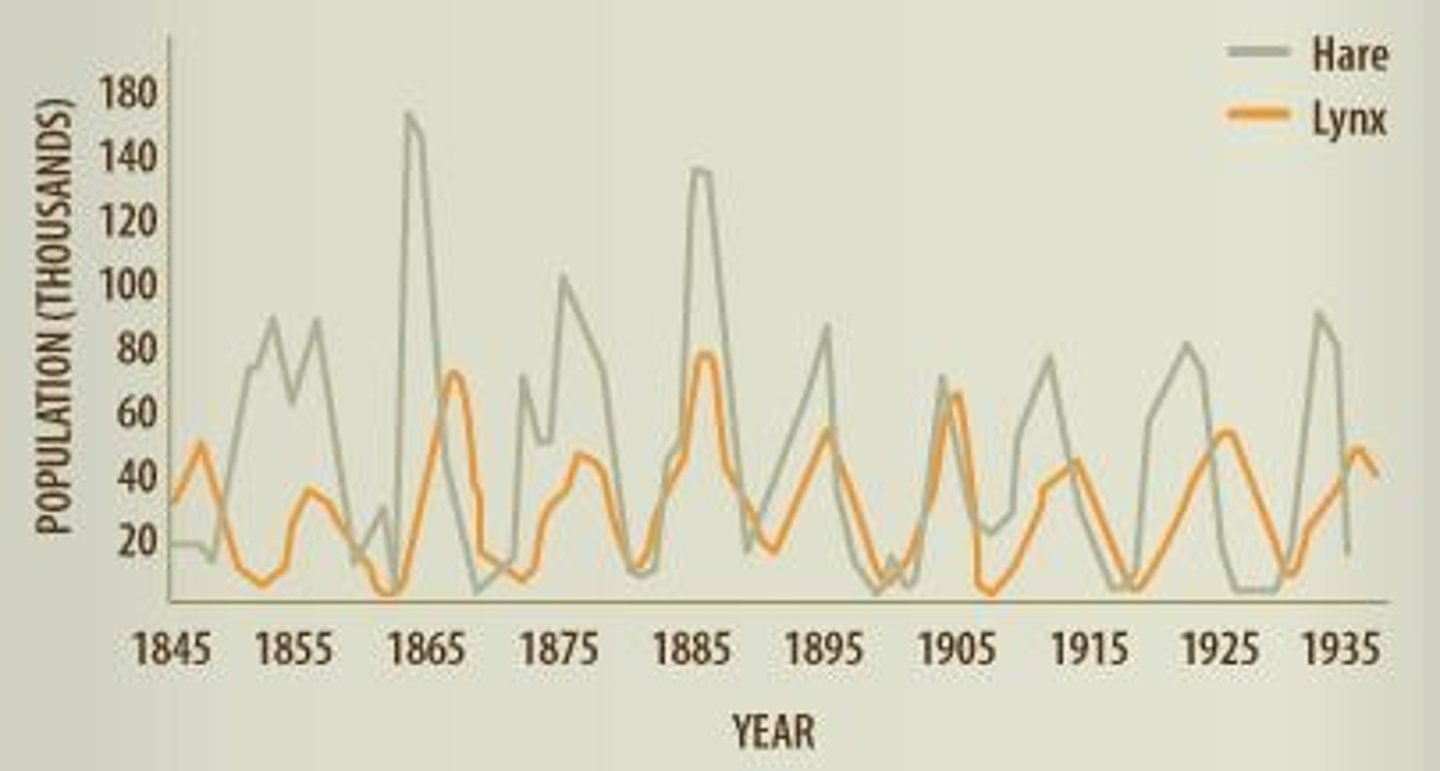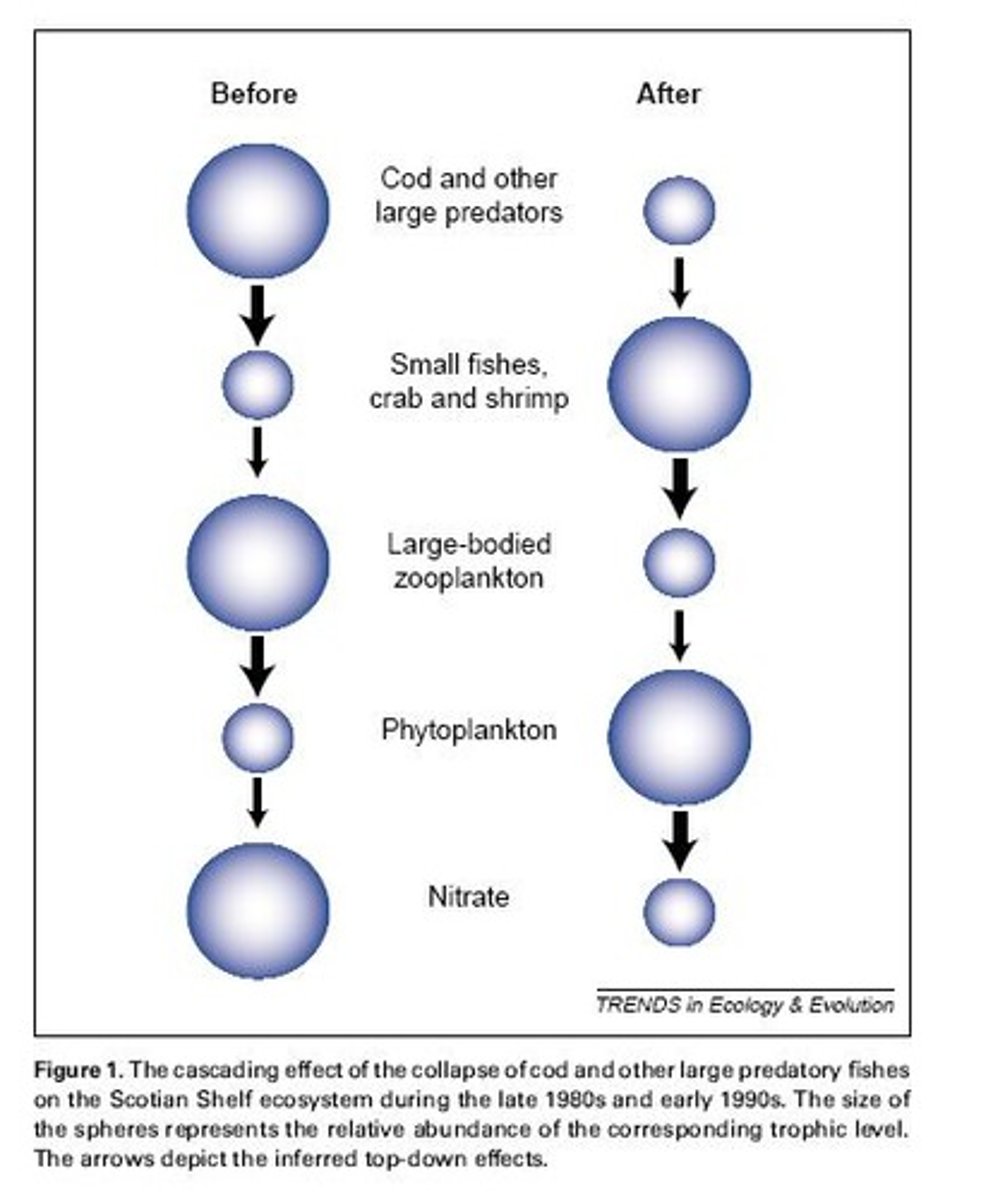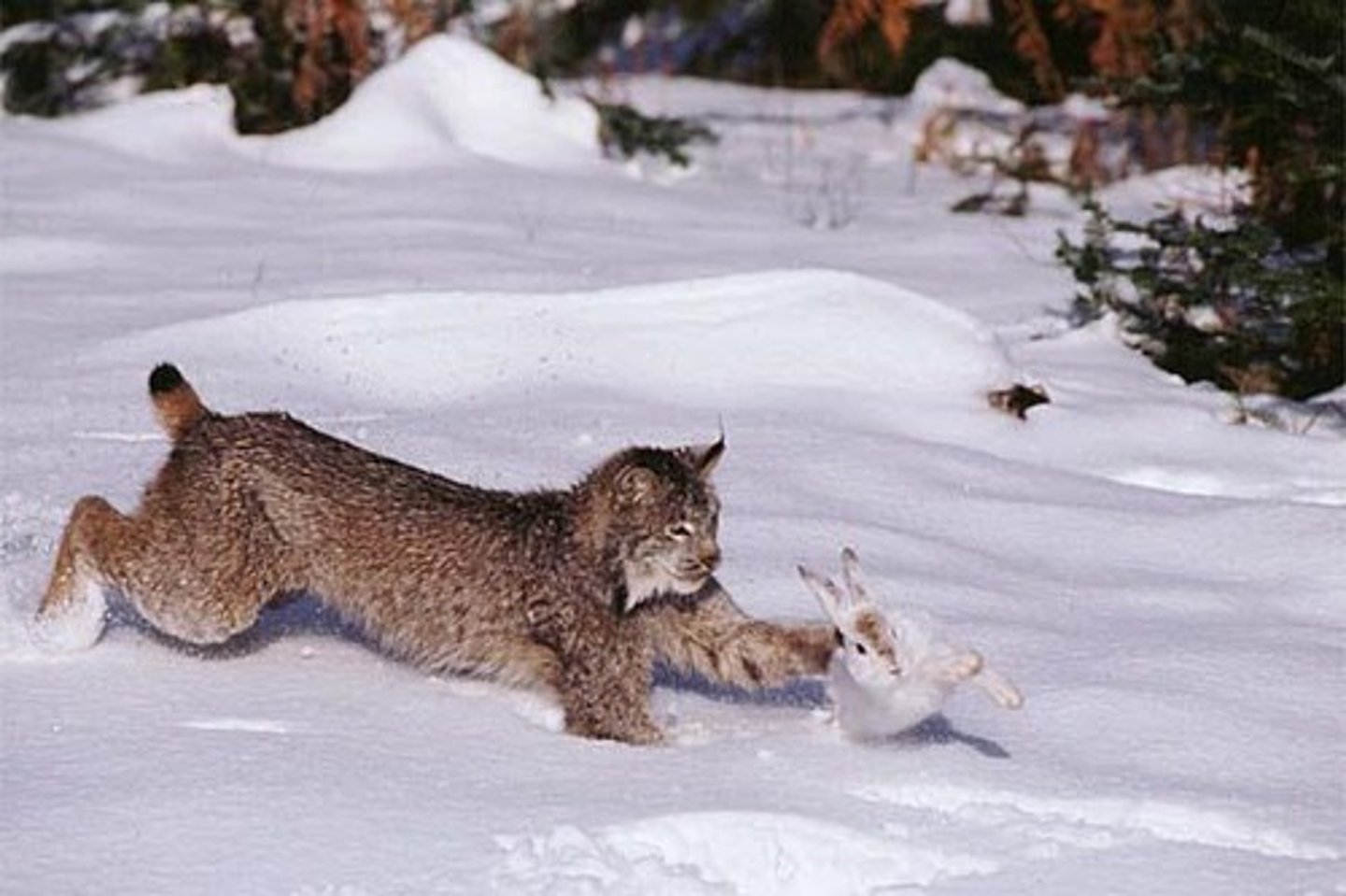Consumer-Resource Interactions: Herbivory, Predation, Parasitism
1/39
There's no tags or description
Looks like no tags are added yet.
Name | Mastery | Learn | Test | Matching | Spaced |
|---|
No study sessions yet.
40 Terms
Consumer-Resource Interaction
One species exploits another, one benefits while the other species is harmed.
Predation
A type of Consumer-Resource interaction where one species benefits (+) and the other species loses out (-).
Herbivory
A herbivore grazes live plant material, but does not typically kill the plant.
Parasitism
A parasite lives on the tissue of another organism (host) and reduces the host's fitness but does not typically kill the host.
Obligate host
A type of parasitic life history where the parasite needs a host to survive.
Facultative host
A type of parasitic life history where the parasite can survive without a host.
Accidental host
A type of parasitic life history where the parasite can't complete its life cycle.
Amensalism
One species negatively affects another species, but does not gain immediately from the interaction.
Consumer influence
Consumer species can greatly influence the abundance and distribution of its resource.
Dynamic Consumer-Resource Interactions
The Consumer influences the abundance of Resources, and the abundance of Resources influences the abundance/behavior of Consumers.
Predator-Prey Cycles
The cyclical pattern of predator and prey populations, typically stable but can be affected by environmental disturbances.

Trophic Cascade
Interactions between consumers and resources that are appreciated when considering all trophic levels.

Snowshoe Hare and Lynx
A classic example of predator/prey interaction.

Size Selected Predation
The complexity of predator-prey relationships, such as the relationship between Snowshoe hares and their environment.
Snowshoe hares habitat
Snowshoe hares live among spruce, jackpine, tamarack, balsam poplar, aspen, and paper birch trees.
Snowshoe hares diet
Snowshoe hares eat the buds of various trees, as well as stems of roses and willow trees.
Predators of hares
Goshawks, great horned owls, mink, weasels, red foxes, and coyotes.
Lotka-Volterra model
A model for cyclic predator-prey interactions.
Growth of prey population
[the intrinsic growth rate of the prey population] - [the removal of prey individuals by predators].
dNh/dt
rhNh - pNhNp
rhNh
Exponential growth by host/prey population.
p
Rate of parasitism / predation.
Nh
Number of hosts/prey.
Np
Number of parasites / predators.
Consumer population growth rate
[rate of conversion of food into offspring] - [mortality rate of consumer population].
dNp/dt
cpNhNp - dpNp
cpNhNp
Rate at which consumer species converts food (resource species) into offspring (c = conversion factor).
dpNp
Death rate of consumer species.
Elements of reality not incorporated in the model
Time lags in predator/prey response, carrying capacities for predator and prey populations, no functional response in predator.
Destabilizing factors for predator-prey cycles
Some destabilizing factor must be present to drive the system (e.g., time delay in the response of population to a change in its food supply).
Stabilizing factors
Predator inefficiency, density-dependent limitation on either predator or prey population by external factors, alternative food source for the predator, refuges for the prey at low prey densities, reduced time delays in predator responses to changes in prey abundance, influx of new replacement individuals from source population.
Refuge
An exploited population requires a refuge for cyclic predator-prey pattern to exist/persist.
Example of a refuge
A groundhog hiding in a burrow, a flock of pigeons, a mayfly pretending to be a spider, or a mussel being too big for a seastar to eat.
Types of Refuge
Space, Numbers, Morphology, behavior/morphology, size.
Size-selection predation
Pisaster sea-stars eat mussels, but if mussels can survive to a large size they can become too big for sea-stars to eat.
Nt
N0 λt
dN/dt
rN
dN/dt (with carrying capacity)
rN (1-N/K)
dN1/dt
r1N1(K1-N1-α12N2/K1)
dN2/dt
r2N2(K2-N2-α21N1/K2)